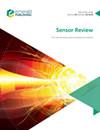设计和实现一个测量系统,用于评估骨固定物的机械性能
IF 1.4
4区 工程技术
Q3 INSTRUMENTS & INSTRUMENTATION
引用次数: 0
摘要
目的设计该测量系统以有效模拟骨固定架的机械可靠性。可用于预评估手术后固定架对患者的力学性能,包括患者术后行走时的静态力学性能和疲劳性能。它主要由一维平台、力传感器、高测量精度位移传感器和伺服电机组成。系统的加载(用于模拟夹具运行后的加载状态)是通过伺服电机的旋转来实现的。它可以通过高精度力传感器读取。采用高精度激光位移传感器测量骨折的相对位移。并进行了相应的理论分析。系统标定结果表明,力传感器输出电压与测力具有良好的线性关系,计算出的非线性误差仅为0.0002%。在700 N轴向力作用下,手术骨折之间的最大相对位移约为1 mm。550n载荷下8.5万次疲劳试验也验证了设计的可行性。该装置被成功设计和制造,用于预评估骨固定物的机械性能。采用高精度力传感器和位移传感器,成功地提高了系统的测量能力。这将为相关研究人员提供一些帮助。本文章由计算机程序翻译,如有差异,请以英文原文为准。
Design and implementation of a measuring system used to evaluate the mechanical performance of the bone fixators
Purpose This measuring system is designed to effectively simulate the mechanical reliability of the operated bone fixators. It can be used to pre-evaluate the mechanical performance of the operated fixator on the patients, including the static mechanical properties and fatigue properties when the patient walks after the operation. Design/methodology/approach It is mainly composed of a one-dimensional platform, a force sensor, a high measuring precision displacement sensor and a servo motor. Loading (which is used to simulate the loading status of the fixators after the operation) of the system is realized by the rotation of the servo motor. It can be read by a high precision force sensor. The relative displacement of the broken bone is obtained by a high precision laser displacement sensor. Corresponding theoretical analysis is also carried out. Findings Calibrated results of the system indicate that the output voltage and the measured force of the force sensors possess an excellent linear relationship, and the calculated nonlinear error is just 0.0002%. The maximum relative displacement between the operated broken bone under 700 N axial force is about 1 mm. Fatigue test under 550 N loading for 85,000 cycles also indicates the feasibility of the design. Originality/value This device is successfully designed and fabricated to pre-evaluate the mechanical performance of the bone fixators. High precision force sensor and displacement sensor are used to successfully increase the measuring ability of the system. This will offer some help to pertinent researchers.
求助全文
通过发布文献求助,成功后即可免费获取论文全文。
去求助
来源期刊

Sensor Review
工程技术-仪器仪表
CiteScore
3.40
自引率
6.20%
发文量
50
审稿时长
3.7 months
期刊介绍:
Sensor Review publishes peer reviewed state-of-the-art articles and specially commissioned technology reviews. Each issue of this multidisciplinary journal includes high quality original content covering all aspects of sensors and their applications, and reflecting the most interesting and strategically important research and development activities from around the world. Because of this, readers can stay at the very forefront of high technology sensor developments.
Emphasis is placed on detailed independent regular and review articles identifying the full range of sensors currently available for specific applications, as well as highlighting those areas of technology showing great potential for the future. The journal encourages authors to consider the practical and social implications of their articles.
All articles undergo a rigorous double-blind peer review process which involves an initial assessment of suitability of an article for the journal followed by sending it to, at least two reviewers in the field if deemed suitable.
Sensor Review’s coverage includes, but is not restricted to:
Mechanical sensors – position, displacement, proximity, velocity, acceleration, vibration, force, torque, pressure, and flow sensors
Electric and magnetic sensors – resistance, inductive, capacitive, piezoelectric, eddy-current, electromagnetic, photoelectric, and thermoelectric sensors
Temperature sensors, infrared sensors, humidity sensors
Optical, electro-optical and fibre-optic sensors and systems, photonic sensors
Biosensors, wearable and implantable sensors and systems, immunosensors
Gas and chemical sensors and systems, polymer sensors
Acoustic and ultrasonic sensors
Haptic sensors and devices
Smart and intelligent sensors and systems
Nanosensors, NEMS, MEMS, and BioMEMS
Quantum sensors
Sensor systems: sensor data fusion, signals, processing and interfacing, signal conditioning.
 求助内容:
求助内容: 应助结果提醒方式:
应助结果提醒方式:


